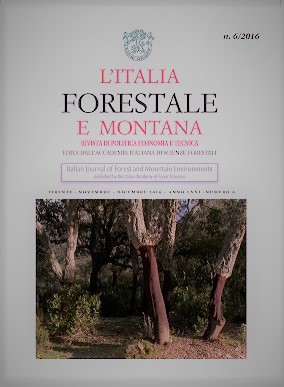Published 2017-03-24
Keywords
- Quercus suber,
- cork stopper,
- TCA,
- forest policy,
- Sardinia
Copyright (c) 2017 Italian Journal of Forest and Mountain Environments

This work is licensed under a Creative Commons Attribution-NonCommercial 4.0 International License.
Abstract
The Sardinian cork oak woodlands and savannas are, in the order, 81 and 100% of the Italian cork oak surface but only 5% of global ones. The domestic industry, even in the face of strong demand for cork stoppers, knows a critical phase following wildfires and degradation of topsoil, reduction in numbers of SMEs and workers, and the growing presence of Iberian origin stoppers used for many Italian wines. The (New) Cork Oak National Plan and the Rural Development Plans should promote the integration between the different moments of the production chain, promoting the restoration and expansion of woodlands, and the technological upgrading of the manufacturing phase, eg. to control the stopper contamination by TCA. Increasingly essential is the contribution of research and development.

